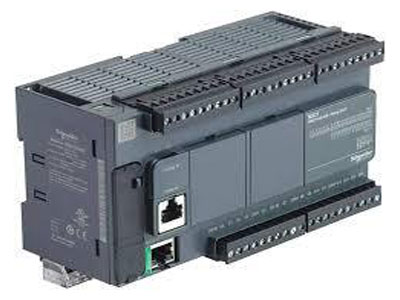Why We Use Plc Instead Of Microcontroller?
Key Takeaway
We use PLCs instead of microcontrollers because PLCs are designed for industrial environments and offer robust communication options. PLCs can handle complex automation tasks and are built to withstand harsh conditions like extreme temperatures and vibrations. They come with extensive support for industrial communication protocols, ensuring seamless integration with other systems. In contrast, microcontrollers are better suited for simpler, smaller-scale applications. PLCs also provide easier programming and maintenance, making them ideal for industrial automation and control tasks.
Understanding PLCs and Microcontrollers
PLCs and microcontrollers are essential in automation and control systems but serve different purposes. PLCs are robust and reliable, ideal for industrial automation in manufacturing, automotive, and utilities, handling complex processes and interfacing with industrial equipment. Microcontrollers, versatile and adaptable, are used in smaller-scale applications requiring specific functionalities and customization. They excel in simpler control tasks. Understanding their differences is crucial for selecting the right control solution. PLCs are preferred for high reliability and precision in industrial settings, while microcontrollers are suitable for smaller projects needing flexible programming. Each system’s strengths cater to different application requirements.

Key Differences Between PLCs and Microcontrollers
The divergence between PLCs and microcontrollers hinges on their designated applications and functionalities. PLCs, tailored for industrial automation, excel in tasks demanding real-time control, unwavering reliability, and robustness. These systems navigate complex control algorithms seamlessly and interface with an array of sensors and actuators pervasive in industrial settings. Conversely, microcontrollers exhibit greater versatility, finding prevalence in modest-scale projects or scenarios necessitating precise control over specific functions. While PLCs prioritize industrial-grade resilience and streamlined integration within complex systems, microcontrollers thrive in scenarios where agility and customization take precedence over ruggedness. The distinction is akin to choosing between a specialized tool crafted for endurance and reliability versus a multifaceted instrument prized for its adaptability and precision. Thus, understanding these disparities is pivotal in selecting the optimal solution for a given application, ensuring seamless integration and optimal performance in industrial endeavors.
Advantages of Using PLCs
The advantages of PLCs are manifold, with reliability and ruggedness standing out prominently. These systems are engineered to endure the harshest industrial settings, unfazed by temperature swings, humidity, or electromagnetic disturbances that are commonplace in manufacturing environments. Beyond their durability, PLCs offer unparalleled flexibility in programming, allowing engineers to swiftly reconfigure them to meet evolving production demands. This adaptability proves invaluable in dynamic manufacturing landscapes where rapid adjustments are the norm. Moreover, PLCs boast extensive diagnostic capabilities, simplifying the process of identifying and rectifying system issues. This diagnostic prowess translates into reduced downtime and enhanced productivity, as engineers can swiftly pinpoint and address any anomalies. Overall, the reliability, adaptability, and diagnostic prowess of PLCs make them indispensable assets in industrial settings, ensuring smooth operations and bolstering efficiency in manufacturing processes.
When to Choose a PLC Over a Microcontroller
Determining whether to opt for a PLC or a microcontroller hinges on the specific demands of the task at hand. PLCs emerge as the preferred choice for applications entailing intricate control operations, an abundance of inputs and outputs, and necessitating unwavering reliability in performance. Industries favor PLCs for their adeptness in managing multifaceted control algorithms seamlessly and their ability to interface with a diverse array of sensors and actuators, ensuring robust operation within industrial settings. Conversely, microcontrollers find their niche in smaller-scale ventures or scenarios necessitating tailor-made programming and adaptability. They shine in contexts where customization and flexibility take precedence over ruggedness, offering agility and versatility for projects with more modest complexities. Thus, discerning the optimal solution between a PLC and a microcontroller boils down to aligning the unique features and capabilities of each with the specific demands of the application, ensuring efficient and effective control system implementation tailored to the task’s requirements.
Practical Applications of PLCs
PLCs, or Programmable Logic Controllers, serve as indispensable components across a spectrum of industries, facilitating streamlined operations and bolstering efficiency. Within the realm of manufacturing, PLCs orchestrate a symphony of tasks, from regulating processes with precision to managing material flow seamlessly along assembly lines. Their prowess extends to the automotive sector, where they take charge of robotic arms, meticulously controlling welding and painting procedures to exacting standards. Moreover, PLCs stand as stalwarts in critical infrastructure domains like oil refineries, where they undertake the vigilant monitoring and control of equipment, ensuring operational integrity and safety. In pharmaceutical manufacturing, PLCs lend their adeptness to the orchestration of intricate processes, guaranteeing compliance with stringent quality standards. Similarly, in utilities such as power generation facilities, PLCs assume a pivotal role, governing a myriad of systems to maintain seamless functionality and operational continuity. Across these diverse industries, PLCs emerge as the linchpins of automation, driving productivity, reliability, and safety to new heights.
Conclusion
In conclusion, the choice between using a PLC or a microcontroller depends on the specific requirements of the application. While microcontrollers offer flexibility and customization, PLCs excel in industrial environments where reliability, robustness, and real-time control are paramount. Understanding the key differences and advantages of each system is essential in selecting the right control solution for a particular project or application.
